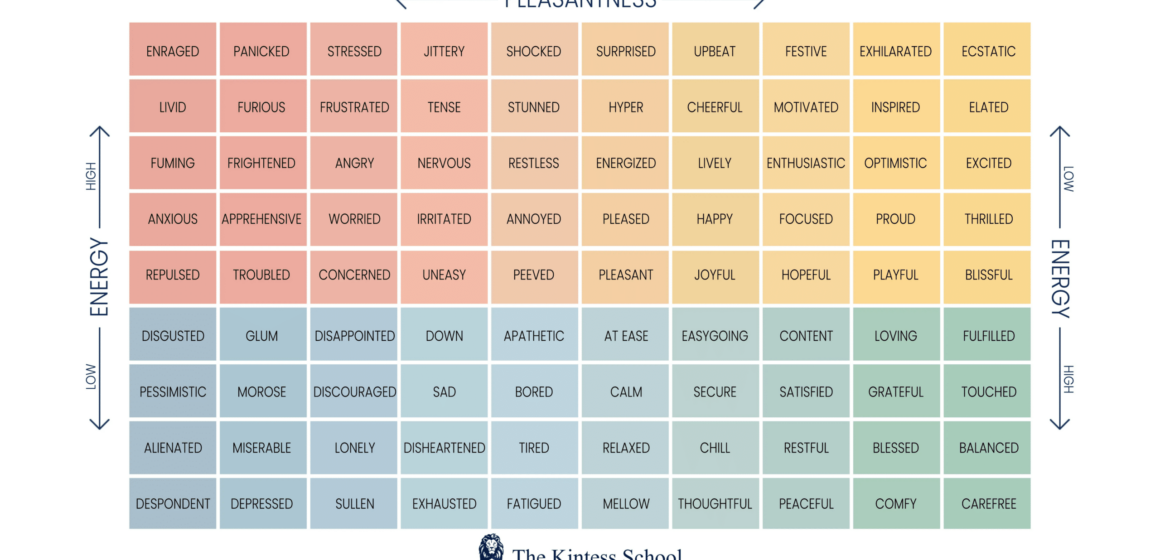What is the Mood Meter?
The Mood Meter is a simple yet powerful tool designed to help individuals understand and regulate their emotions. Developed by psychologists Marc Brackett and his colleagues at the Yale Center for Emotional Intelligence, the Mood Meter is an integral part of the RULER program, an evidence-based approach to social and emotional learning (SEL). This tool provides a systematic way for individuals to identify their emotions, understand their causes, and take steps to manage them effectively.
Understanding the Mood Meter
The Mood Meter is a color-coded chart divided into four quadrants, each representing a different set of emotions. These quadrants are defined by two axes: energy and pleasantness. The vertical axis measures the level of energy, ranging from high to low, while the horizontal axis measures pleasantness, ranging from unpleasant to pleasant.
Red Quadrant: High energy, unpleasant emotions. This includes feelings such as anger, frustration, anxiety, and stress. When you are in the red quadrant, your body is usually in a state of heightened arousal, preparing to tackle a challenge or threat.
Yellow Quadrant: High energy, pleasant emotions. This quadrant includes emotions such as excitement, joy, and enthusiasm. These feelings are often associated with positive experiences and high levels of engagement and creativity.
Green Quadrant: Low energy, pleasant emotions. This quadrant encompasses emotions like calmness, contentment, and relaxation. When you are in the green quadrant, you are usually at peace and in a state of balance.
Blue Quadrant: Low energy, unpleasant emotions. This includes feelings such as sadness, disappointment, and fatigue. The blue quadrant is often associated with periods of low motivation and withdrawal.
Using the Mood Meter
The primary purpose of the Mood Meter is to help individuals build emotional awareness and develop strategies to manage their emotions. Here are some key steps to effectively using the Mood Meter:
Identify Your Current Emotion: The first step is to pinpoint where you are on the Mood Meter at any given moment. This involves a mindful check-in with yourself to assess your energy level and your sense of pleasantness or unpleasantness.
Understand the Cause: Once you have identified your current emotion, the next step is to reflect on what might be causing it. This could involve considering recent events, interactions, or thoughts that have contributed to your current state.
Label the Emotion: Accurately labeling your emotion can help you better understand and communicate your feelings. The Mood Meter encourages you to go beyond basic emotions like “happy” or “sad” and use more specific terms like “elated” or “discouraged.”
Regulate the Emotion: The final step is to use strategies to manage your emotions effectively. This might involve techniques such as deep breathing, positive self-talk, or taking a break to shift from a high-energy unpleasant state (red quadrant) to a more balanced state (green quadrant).
Benefits of the Mood Meter
The Mood Meter offers numerous benefits for individuals of all ages. In educational settings, it has been shown to improve students’ emotional intelligence, leading to better academic performance, enhanced social interactions, and reduced behavioral problems. Teachers and parents can use the Mood Meter to foster a supportive and emotionally aware environment.

In the workplace, the Mood Meter can enhance team dynamics and leadership effectiveness. By promoting emotional awareness and regulation, it helps employees navigate stress, improve communication, and build a positive organizational culture.
On a personal level, the Mood Meter can be a valuable tool for anyone looking to improve their emotional well-being. By regularly checking in with their emotions, individuals can develop greater self-awareness, resilience, and emotional balance.
The Mood Meter is more than just a tool for identifying emotions; it is a pathway to understanding and managing our inner world. By offering a structured approach to emotional awareness and regulation, the Mood Meter empowers individuals to lead more balanced, fulfilling lives. Whether in schools, workplaces, or personal settings, the Mood Meter serves as a guide to navigating the complex landscape of human emotions.
